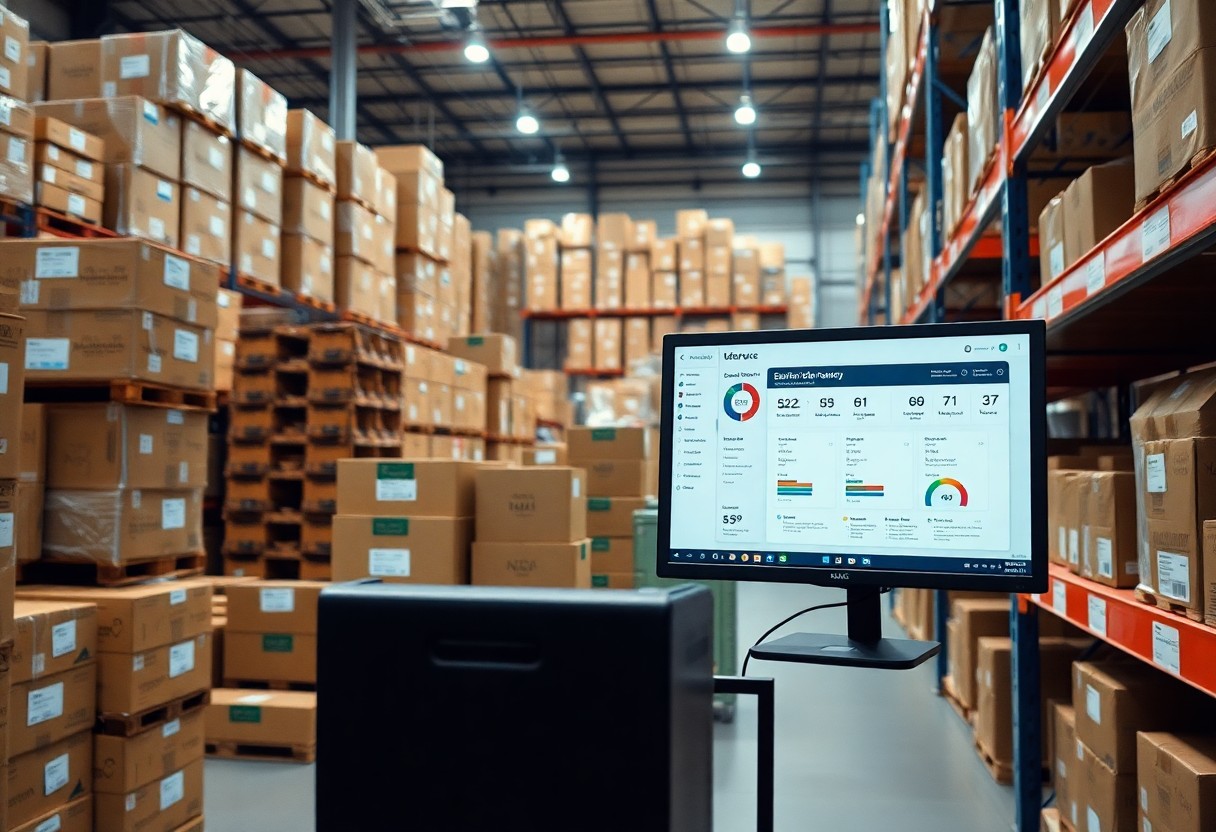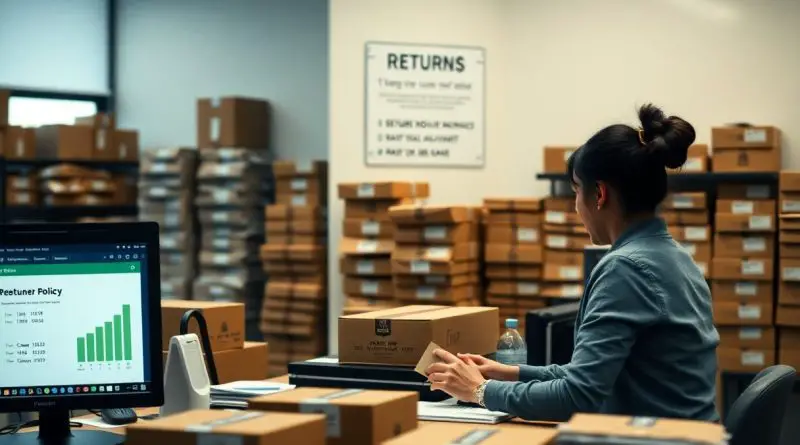Handling Returns and Refunds in a Dropshipping Model
You need to establish a clear and fair process for managing returns and refunds to protect your business reputation. Start by creating a transparent return policy that outlines the conditions for returns and exchanges. Communicating effectively with your supplier about defective items is vital to avoid potential disputes. Additionally, ensuring a swift and efficient processing of customer refunds will help you maintain positive relationships with your customers, directly impacting your business’s success and credibility.

Understanding the Dropshipping Model
The dropshipping model allows you to run an online store without holding inventory, as products are shipped directly from suppliers to your customers. This method enables lower overhead costs and enables you to focus on marketing and customer service. For more detailed insights on logistics, check out How to Handle Shipping and Refund for Dropshipping Stores.
Definition of Dropshipping
Dropshipping is a retail fulfillment method where you, as the retailer, don’t keep the products you sell in stock. Instead, once an order is placed in your store, you purchase the item from a third-party supplier who then ships it directly to your customer.
Key Responsibilities of a Dropshipper
Your responsibilities as a dropshipper include selecting reliable suppliers, managing product listings, setting competitive prices, and ensuring a smooth customer experience from purchase to delivery. Developing efficient communication with suppliers is also vital to address inventory issues and defective items promptly.
Specifically, you must establish a robust communication channel with your suppliers to ensure product availability and quality. Maintaining up-to-date product information on your website is imperative to manage customer expectations and avoid returns related to incorrect orders. Implementing a transparent return policy further empowers you to handle any defects efficiently, reinforcing consumer trust and satisfaction. This proactive approach not only protects your business’s reputation but also enhances customer loyalty.

Importance of a Clear Return Policy
A clear return policy is vital in a dropshipping model as it sets customer expectations and reduces confusion. By defining the terms of returns and refunds, you foster trust with your customers, which can significantly influence their purchasing decisions. It also minimizes potential disputes and enhances your store’s credibility, encouraging repeat business.
Creating the Return Policy
When creating your return policy, ensure it is straightforward and fair. Outline key points such as the return window, condition for returns, and whether shipping costs are refundable. Consider customer-friendly practices, like extending return periods during holidays. This proactive approach can lead to higher customer satisfaction and loyalty.
Communicating the Policy to Customers
Effectively communicating your return policy to customers is imperative. Place the policy prominently on your website—ideally, in the footer and during the checkout process. Clear, accessible language will help customers easily understand their rights, reducing potential confusion or dissatisfaction.
Utilizing multiple channels to communicate your return policy enhances visibility. Incorporate it into confirmation emails, product pages, and FAQs. Engage customers through social media posts or newsletters, reiterating policy highlights. Transparency tends to foster positive relationships, leading to increased customer confidence in your brand. Providing easy access to your return policy decreases anxiety around purchases, while also empowering customers with knowledge about their options.
Handling Defective or Damaged Products
Defective or damaged products can severely impact your business reputation and customer satisfaction. You need to establish a straightforward process for handling these issues swiftly and effectively. Having a clear understanding of how to identify problems and communicate with suppliers is crucial to not only resolve customer concerns but also to minimize financial losses.
Identifying Defective Items
To effectively manage defective items, you must first establish clear criteria for identifying product issues. This includes checking for signs of damage upon delivery, monitoring customer feedback, and requesting photographic evidence when complaints arise. Quick identification enables you to address issues proactively and reduce the impact on your customer base.
Communicating with Suppliers
Effective communication with your suppliers is the backbone of addressing defective products. Document all relevant details regarding the defect, including order numbers, descriptions, and visual proof if possible. You should aim to maintain a professional and solution-oriented dialogue, which helps establish a strong partnership that can accommodate your needs for refunds or replacements.
When you communicate about defective items, clarity is key. Provide suppliers with a complete overview of the issue and express your expectations for resolution. For example, if a supplier is consistently sending damaged goods, outline the frequency and types of defects you’ve encountered, and use specific numbers to emphasize the impact on your business. This approach not only encourages suppliers to take corrective action but also strengthens your position in future negotiations.
Processing Customer Returns
Efficient processing of customer returns is important for maintaining trust and satisfaction. A well-structured approach not only minimizes friction but also enhances your brand’s reputation. Start with a clear communication channel where customers can quickly access your return policy and initiate requests. Your policy should outline acceptable reasons for returns, the conditions under which items can be returned, and any specific packaging requirements, ensuring transparency throughout the process.
Steps for Managing Returns
To manage returns effectively, begin by verifying the customer’s request and ensuring it aligns with your return policy. Once confirmed, instruct the customer on how to package and ship the item back to you or directly to the supplier. After receiving the returned item, inspect it for any damage or signs of use. Finally, once everything checks out, process the refund in a timely manner to uphold customer satisfaction.
Timelines for Refunds
Setting clear timelines for refunds is vital for customer satisfaction. Typically, refunds should be processed within 5 to 14 business days after receiving the returned item. This timeframe allows you to inspect the product and confirm its condition before initiating the refund back to the customer’s original payment method.
Customers appreciate transparency regarding refund timelines. Communicate to them that the majority of refunds are processed within 6 to 10 business days post-inspection. Consider implementing automated notifications to keep them informed of their refund status. Adhering to these timelines not only reduces anxiety but also fosters a positive experience, encouraging repeat purchases.

Maintaining Customer Trust
Establishing and maintaining customer trust is necessary in a dropshipping model, especially during the returns process. A reliable return policy can enhance credibility and promote customer loyalty. By prioritizing transparency and effective communication, you ensure customers feel valued, even when issues arise.
Importance of Transparency
Transparency in your return policy helps customers feel informed and secure about their purchases. Clearly outlining your process, including timelines and conditions for returns, minimizes confusion and sets expectations, fostering a trusting relationship between you and your customers.
Best Practices for Customer Communication
Effective communication with customers can significantly improve their experience and trust in your brand. Providing timely updates on the return process, being responsive to inquiries, and addressing concerns directly ensures customers feel heard and respected throughout their transaction with you.
Maintaining clear and open lines of communication when handling returns involves several strategies. First, you should set automatic email notifications that confirm the receipt of return requests and updates on refund status. Second, consider utilizing a FAQ section specifically addressing return inquiries to preemptively tackle common concerns. Additionally, prompt replies to customer inquiries might enhance their confidence in your service; aim for responses within 24 hours. Your ability to convey assurance and clarity during the return process not only strengthens customer trust but can also turn potentially negative experiences into opportunities for loyalty.
Legal Considerations and Compliance
When running a dropshipping business, understanding the how do returns and exchanges work in dropshipping is necessary for compliance and risk mitigation. You must navigate various legal frameworks that govern consumer protection rights, ensuring your return policies are not only customer-friendly but also legally sound. Non-compliance can lead to penalties or damage your reputation, so familiarize yourself with local laws that impact your operations.
Understanding Consumer Rights
Consumer rights vary by region, but you must ensure that your return policies align with those standards. Typically, customers have rights such as the ability to return defective products or receive accurate information about products. Failure to comply with these rights could expose your business to legal action and damage customer trust.
Adhering to E-commerce Regulations
Compliance with e-commerce regulations is vital in maintaining your operational legitimacy. You must understand regulations such as the GDPR for data protection, the CAN-SPAM Act for email marketing, and local sales tax laws. Each regulation can impact how you handle customer data, communicate with your audience, and process refunds, reinforcing the need to keep your policies up-to-date.
Particular attention should be paid to regulations like the General Data Protection Regulation (GDPR) if you sell to EU customers, which mandates strict guidelines for handling personal data. Non-compliance could result in hefty fines, so using privacy policies and ensuring secure transactions play a significant role in legal adherence. Additionally, familiarize yourself with local sales tax regulations to avoid tax-related penalties. Establishing robust compliance processes will enhance your brand’s credibility and safeguard your venture against potential legal challenges.
Conclusion
Presently, effectively handling returns and refunds in your dropshipping model is crucial for maintaining customer satisfaction and your business reputation. Establish a transparent return policy, ensure clear communication with your suppliers regarding defective items, and process refunds promptly to enhance your service. By following these practices, you can create a seamless return experience for your customers. For additional insights, refer to this guide on how to handle returns for a dropshipping business.
FAQ
Q: What should I include in my return policy for a dropshipping business?
A: Your return policy should clearly outline the time frame for returns, conditions for returning items, any restocking fees, and instructions on how customers can initiate a return. It’s important to also address who pays for return shipping and how refunds will be processed.
Q: How can I effectively communicate with suppliers regarding defective items?
A: Establish a reliable communication channel with your suppliers, such as email or a dedicated platform. Provide detailed information about the defective item, including photos, and request their return procedures. Build a good relationship to facilitate smoother processes for any future issues.
Q: What methods can I use to process refunds efficiently?
A: Utilize automated systems for refund processing to streamline the experience. Ensure your payment processor is set up to handle refunds quickly, and communicate transparently with customers about the expected timeline for refunds to maintain trust.
Q: How should I handle customer inquiries about return status?
A: Set up a FAQ section on your website to address common return status inquiries. For specific cases, provide a means for customers to reach out easily, and ensure your customer service team is trained to respond promptly and informatively.
Q: What steps can I take to minimize return rates in my dropshipping business?
A: Focus on providing accurate product descriptions, high-quality images, and thorough sizing guides. Encourage customer reviews to build community trust. Additionally, streamline the purchasing process to ensure customers make informed decisions before buying.

